Looking for a feline friend that’s larger than life? Prepare to be amazed by the world of big cat breeds! Forget the dainty image of the average house cat; some of these magnificent breeds can tip the scales at a whopping 25 pounds or more, essentially doubling the size of their smaller cousins. While their generous proportions offer extra cuddles and companionship, it’s essential to understand that these gentle giants come with unique needs. Just like you might need to invest in extra-sturdy cat trees to accommodate their size and ensure they get the right amount of carefully measured food portions to maintain a healthy weight.
If you’re ready to welcome a supersized feline into your family, explore these 10 remarkable big domestic cat breeds that are sure to steal your heart.
Key Considerations for Biggest Cat Breeds
- While a typical cat weighs between 8–12 pounds, certain breeds can healthily reach 20 pounds and beyond.
- Larger cat breeds require bigger and more robust equipment such as cat trees, scratching posts, and litter boxes to suit their size.
- Preventing obesity is crucial in big cat breeds to avoid potential health complications associated with excessive weight gain.
1. Maine Coon
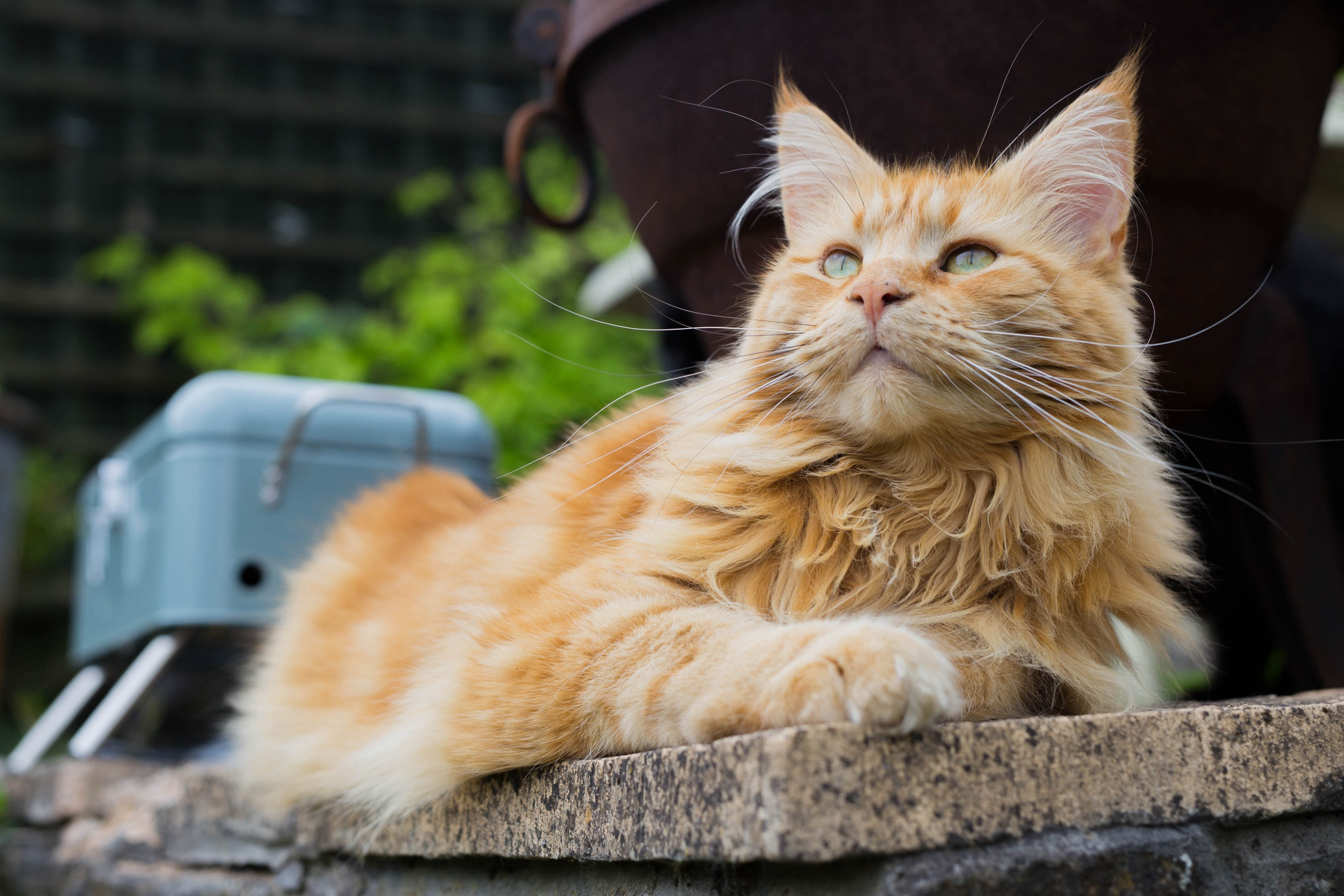 A majestic orange Maine Coon cat lying down, showcasing its large size and fluffy fur
A majestic orange Maine Coon cat lying down, showcasing its large size and fluffy fur
Photo by Adobe Stock/Crashin/Wirestock
Weight: 8–18 pounds
The Maine Coon is not only one of the most popular big domestic cat breeds but also renowned for its gentle and amiable nature. Often described as “gentle giants,” Maine Coons are known for their loyalty and laid-back personalities, making them exceptional family companions.
Their substantial size necessitates spacious litter boxes and durable scratching posts that can withstand their playful energy. Furthermore, Maine Coons have a predisposition to hip dysplasia, highlighting the importance of regular veterinary check-ups to monitor and maintain their joint health.
Consult with your veterinarian about proactive measures to support your Maine Coon’s joint health. They might recommend incorporating joint supplements into your feline’s diet to promote long-term mobility and well-being.
2. Norwegian Forest Cat
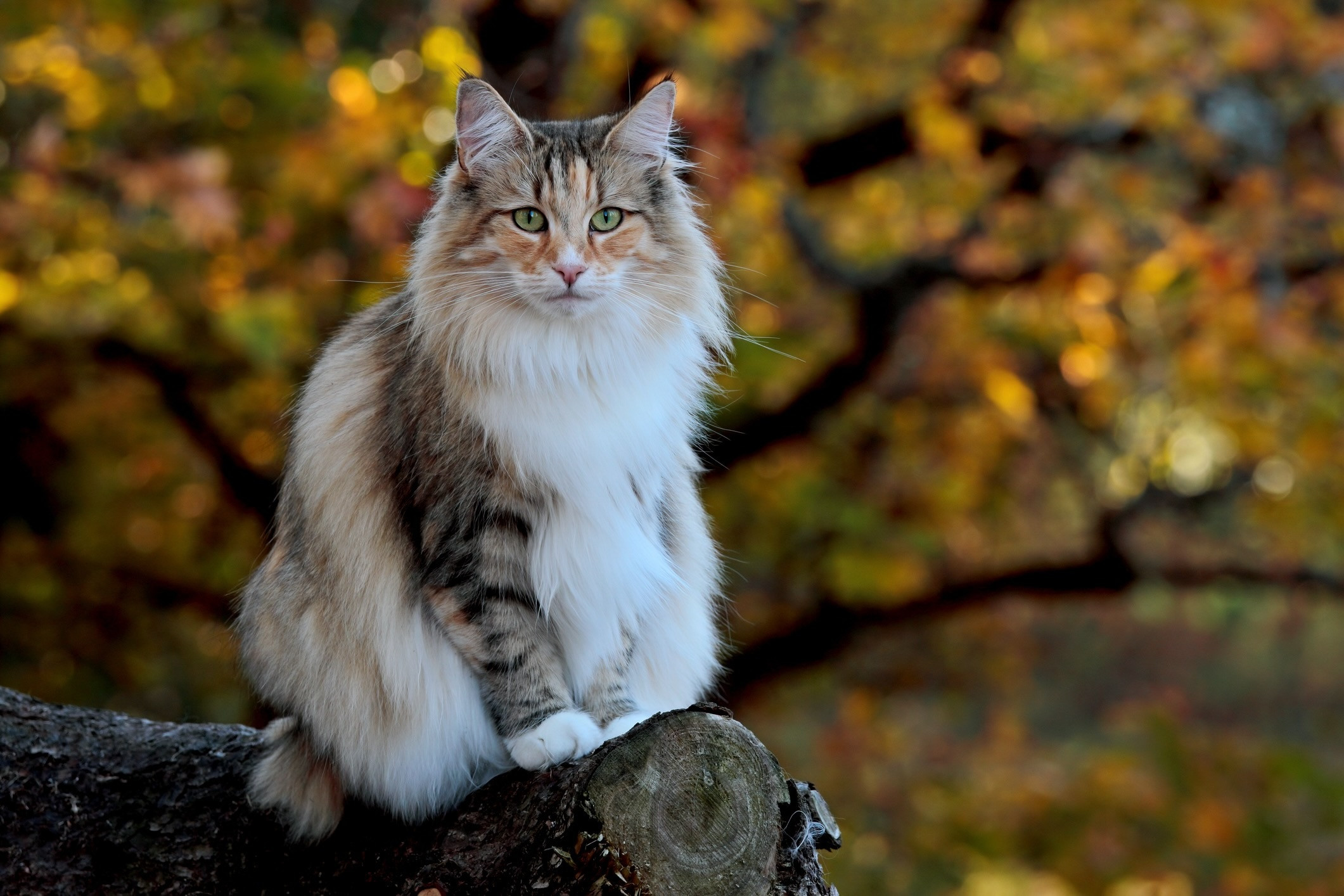 A calico Norwegian Forest Cat perched on a log, displaying its thick fur and robust build
A calico Norwegian Forest Cat perched on a log, displaying its thick fur and robust build
Photo by undefined undefined/iStock / Getty Images Plus via Getty Images
Weight: 12–16 pounds
Don’t be deceived by their luxurious, thick fur—the Norwegian Forest Cat, affectionately nicknamed “Wegie,” is as large and sturdy as they appear. Originating from the Scandinavian forests, these natural climbers possess a muscular build beneath their dense coat. To satisfy their climbing instincts and maintain their activity levels, Wegies thrive with sturdy cat trees and elevated perches in their environment.
While generally robust, their size and active nature make them prone to conditions like hip dysplasia and arthritis. Therefore, maintaining a healthy weight through balanced nutrition and regular exercise is paramount for this big, fluffy cat breed to ensure a long and joyful life.
3. Siberian
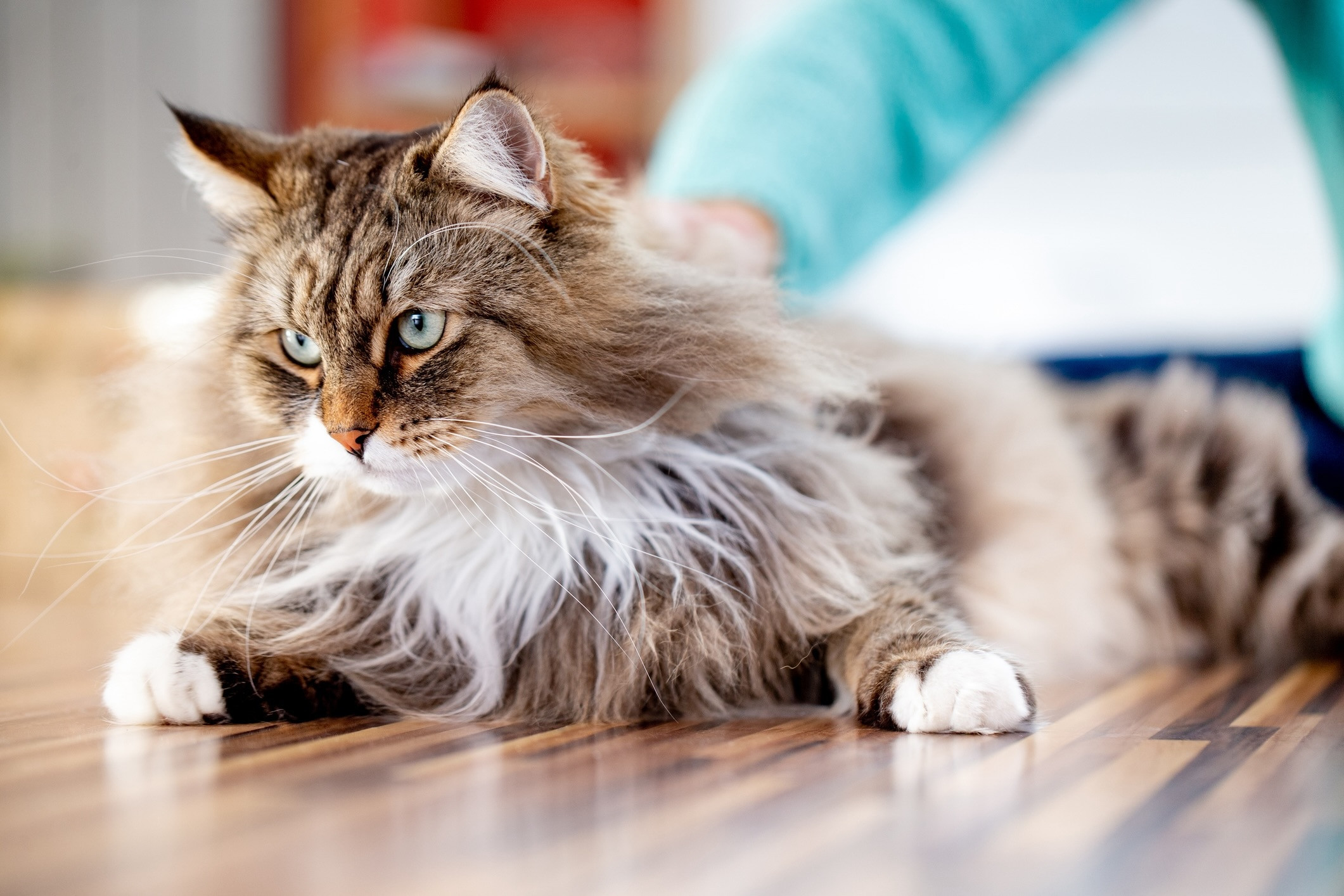 A Siberian cat lying on the floor being petted, showing its triple coat and gentle expression
A Siberian cat lying on the floor being petted, showing its triple coat and gentle expression
Photo by CasarsaGuru/E+ via Getty Images
Weight: 12–15 pounds
The Siberian, the national cat of Russia, is a breed that exudes both beauty and resilience. Characterized by their striking eyes and a lavish triple coat that protects them from harsh climates, Siberian cats are truly captivating. Interestingly, this big cat breed is known for its slow maturation, often taking up to five years to reach their full physical development and size.
Despite their cuddly appearance and love for lounging, Siberians can be susceptible to obesity if their diet and activity are not carefully managed. To keep them in shape and stimulated, encourage daily playtime. These intelligent felines can even be leash trained, offering an adventurous way to explore the outdoors while staying active. Regular weight monitoring is also advisable to ensure they maintain a healthy physique.
4. Bengal
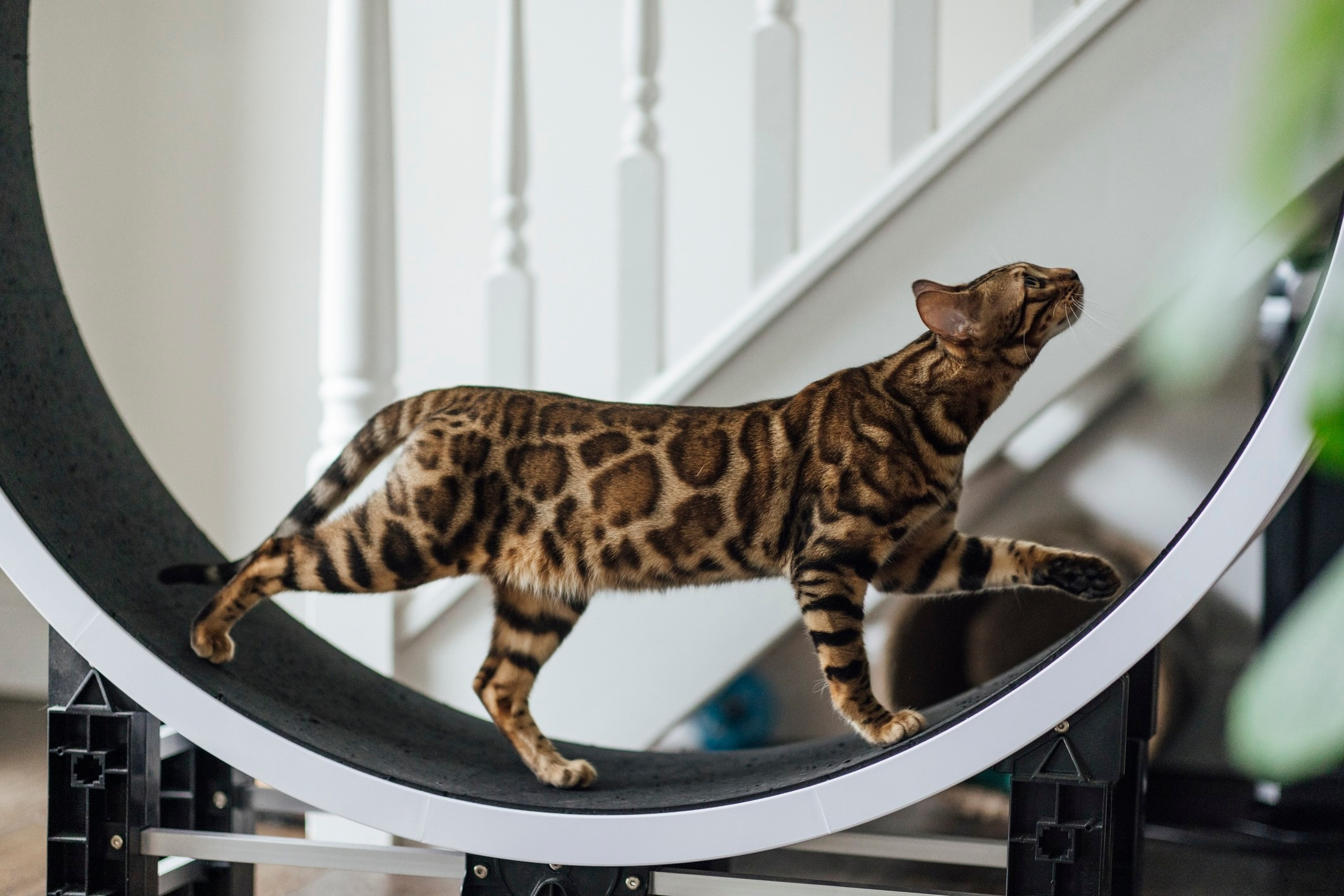 A Bengal cat walking on a cat wheel, highlighting its athletic build and spotted coat
A Bengal cat walking on a cat wheel, highlighting its athletic build and spotted coat
Photo by SolStock/E+ via Getty Images
Weight: 8–15 pounds
The Bengal cat embodies the captivating allure and athletic prowess of a wild leopard, brought into a domestic setting. With their striking spotted or marbled coats and muscular bodies, Bengals are visually stunning and full of energy. While they appreciate a good cat nap as much as any feline, Bengals are inherently active and require ample vertical space to satisfy their jumping and climbing urges.
Bengals possess a strong hunting instinct, which can be positively channeled through interactive feeding methods. Puzzle feeders and treat-dispensing toys are excellent tools to engage their predatory nature, provide mental stimulation, and prevent boredom.
5. Savannah
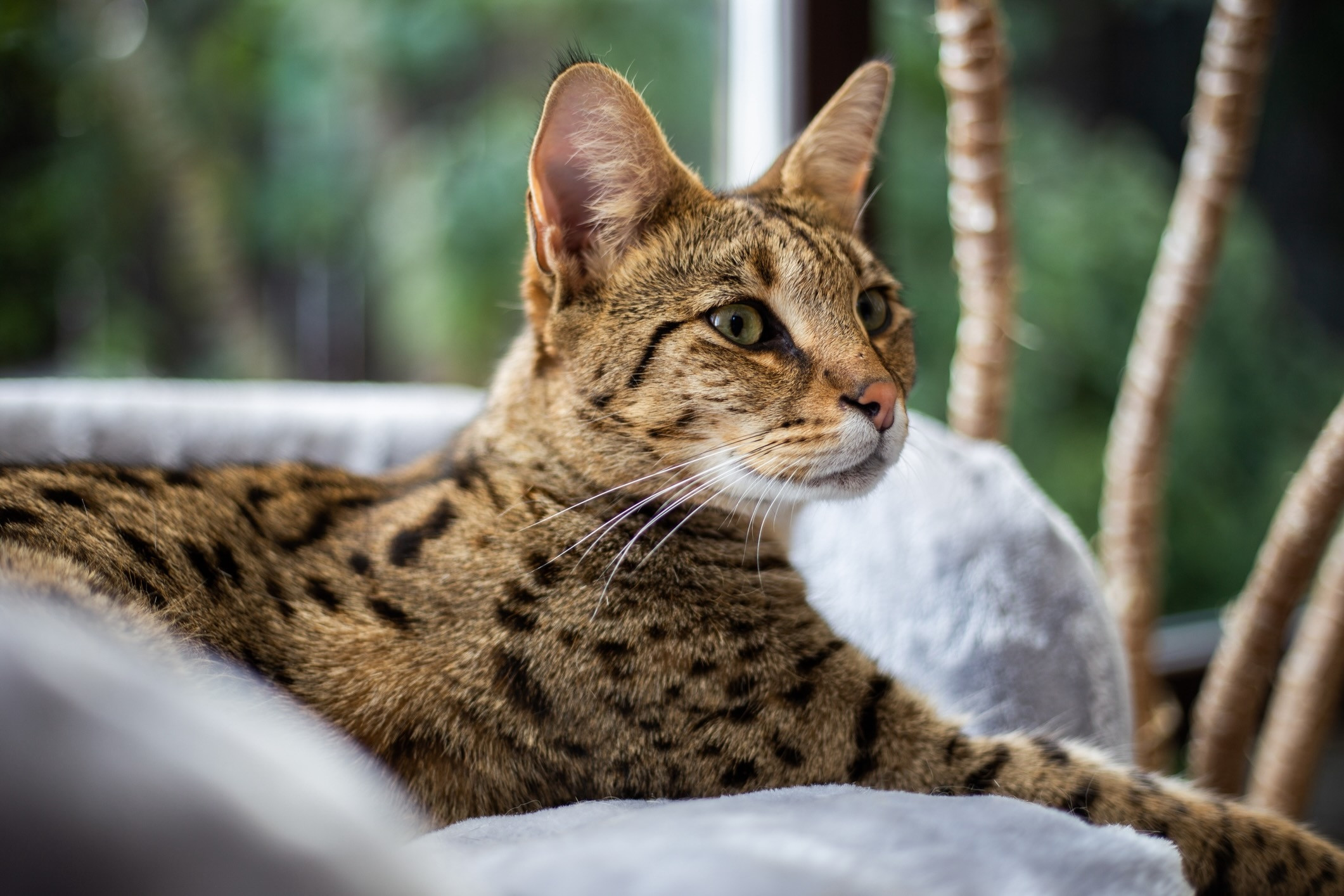 A Savannah cat lounging on a chair, showcasing its tall stature and exotic appearance
A Savannah cat lounging on a chair, showcasing its tall stature and exotic appearance
Photo by Gennadiy Naumov/iStock / Getty Images Plus via Getty Images
Weight: 12–25 pounds
The Savannah cat undeniably possesses a wild elegance that would make them equally at home roaming the African Serengeti or relaxing in your living room. This breed is a fascinating hybrid, resulting from a cross between an African Serval and a domestic house cat. Savannahs inherit a sweet and engaging temperament combined with an abundance of energy from their Serval ancestry. Notably, they are incredibly athletic and possess impressive jumping abilities, capable of leaping up to 8 feet in the air! To accommodate their athleticism, Savannahs require durable and tall cat trees, along with secure shelves to facilitate safe climbing and exploration within their environment.
6. Ragdoll
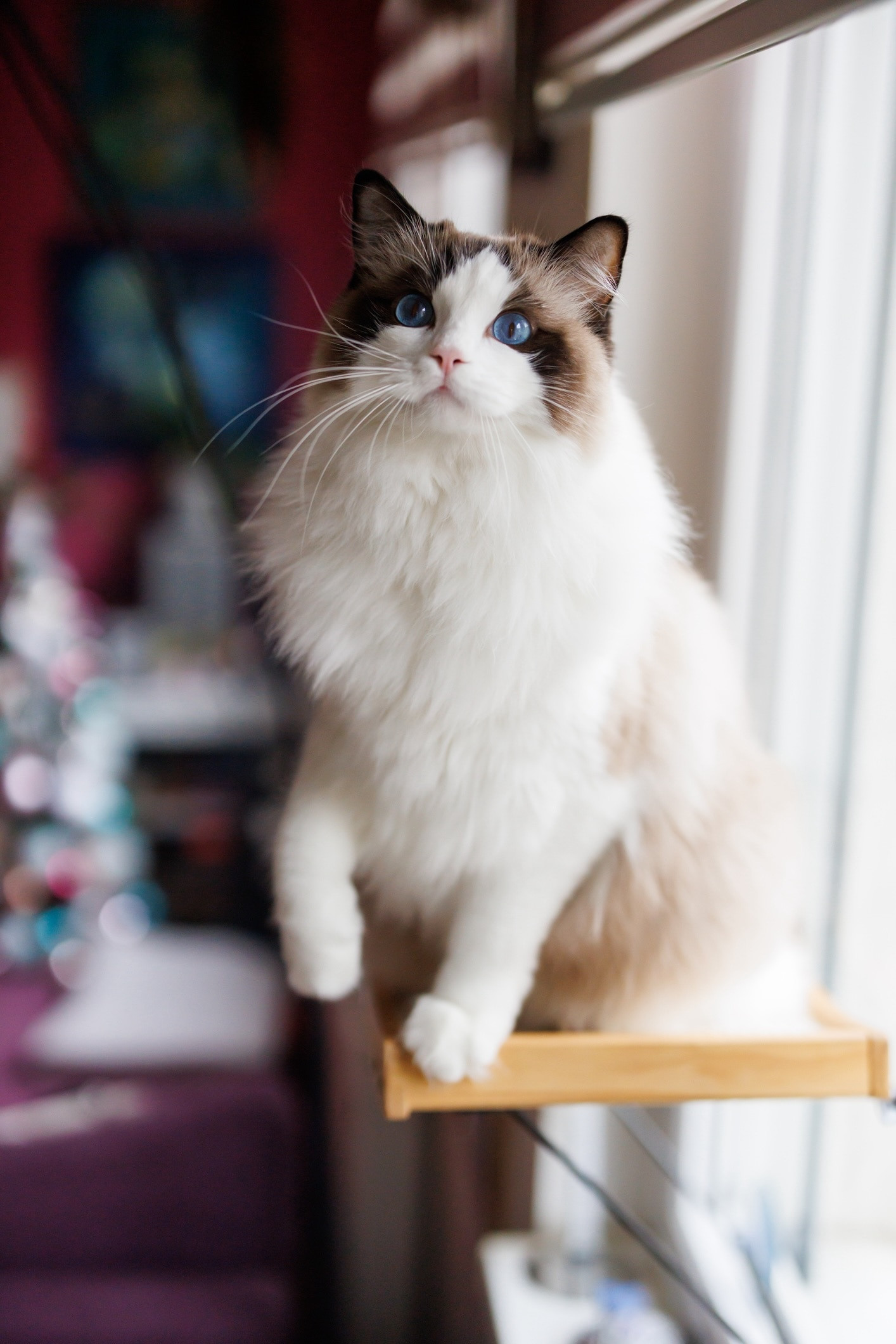 A Ragdoll cat sitting on a cat tower, exhibiting its relaxed posture and blue eyes
A Ragdoll cat sitting on a cat tower, exhibiting its relaxed posture and blue eyes
Photo by bojanstory/E+ via Getty Images
Weight: 10–20 pounds
As their name suggests, Ragdoll cats are known for their exceptionally docile and floppy nature, combined with a considerable size. These gentle giants are as sweet-tempered as they are large, making them wonderful and affectionate companions. While Ragdolls are slow to mature, typically not reaching their full size and weight until around 4 years of age, their relaxed disposition can predispose them to weight gain if not carefully managed.
To prevent obesity and the potential onset of arthritis, it’s important to practice portion control during feeding and encourage regular playtime. Engage these laid-back felines in exercise through interactive games of fetch and stimulate their minds with clicker training to keep them active and healthy.
7. RagaMuffin
 A dilute calico RagaMuffin cat lounging under a net, displaying its fluffy coat and gentle face
A dilute calico RagaMuffin cat lounging under a net, displaying its fluffy coat and gentle face
Photo by rachasuk/Creatas Video via Getty Images
Weight: 10–20 pounds
Similar to their Ragdoll relatives, RagaMuffin cats are slow growers, reaching their full-grown size around 4 years old. However, this fluffy cat breed is naturally big-boned and substantial, requiring larger-sized cat supplies right from the start.
When preparing for a RagaMuffin, consider investing in jumbo-sized cat trees, spacious litter boxes, and appropriately sized carriers to ensure their comfort and well-being. As they age, RagaMuffins can be prone to arthritis, making it essential to prioritize joint health through proper nutrition that supports bone and joint development, and regular, moderate exercise.
8. American Bobtail
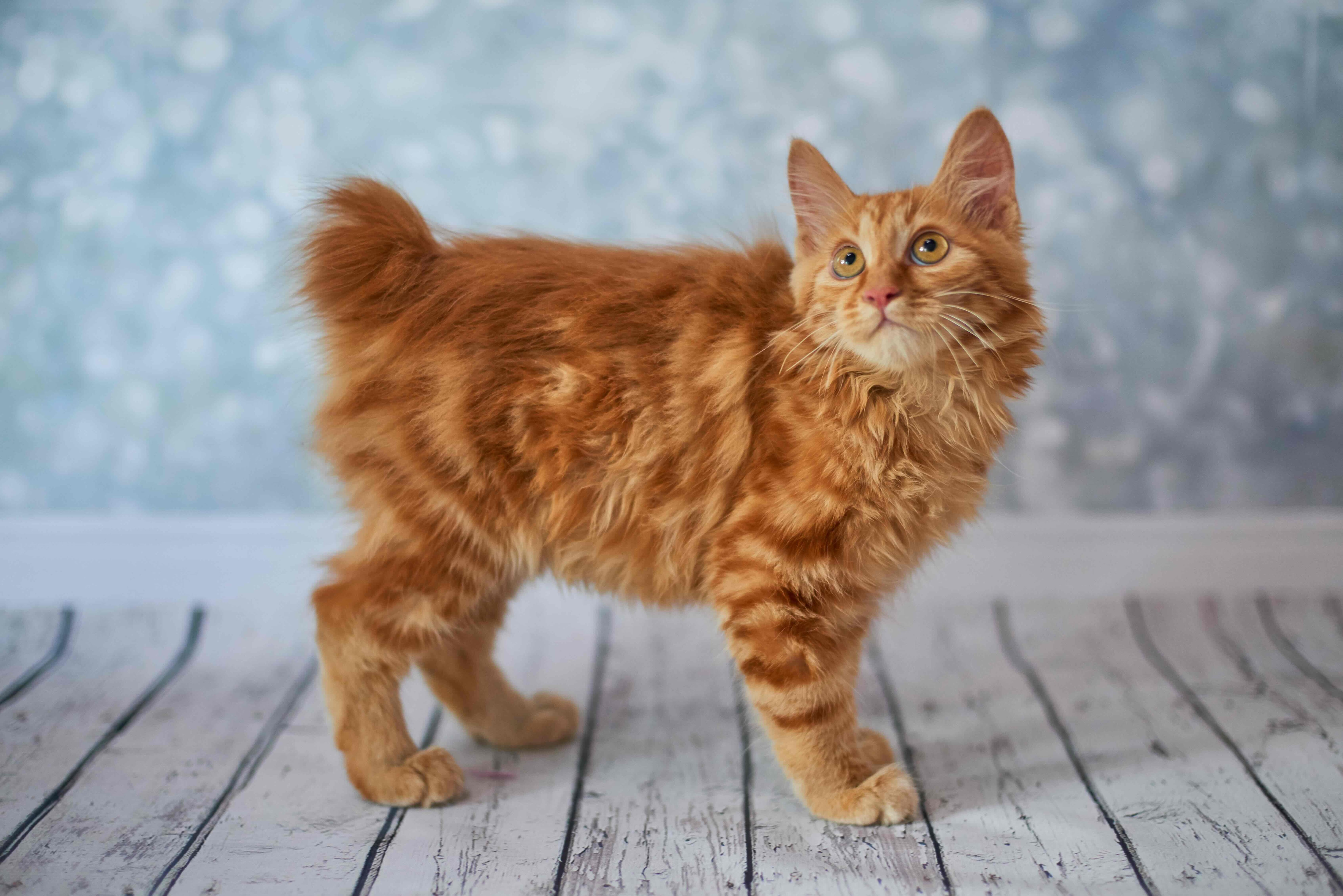 An orange American Bobtail kitten looking upwards, showcasing its bobbed tail and playful demeanor
An orange American Bobtail kitten looking upwards, showcasing its bobbed tail and playful demeanor
Photo by Adobe Stock/jane_khomi
Weight: 7–16 pounds
Distinguished by their naturally short, or “bobbed,” tail, the American Bobtail is a breed known for its affectionate and playful personality. These intelligent cats are highly trainable and excel at activities that challenge their minds, such as puzzle feeders and interactive games. They can even be trained to walk on a leash, offering opportunities for outdoor adventures.
It’s important to note that the genetic mutation responsible for their distinctive bobbed tail can also predispose American Bobtails to spine and hip issues. To support their overall health and well-being, feed them an AAFCO-compliant diet to help maintain an ideal weight and provide essential nutrients for skeletal health.
9. British Shorthair
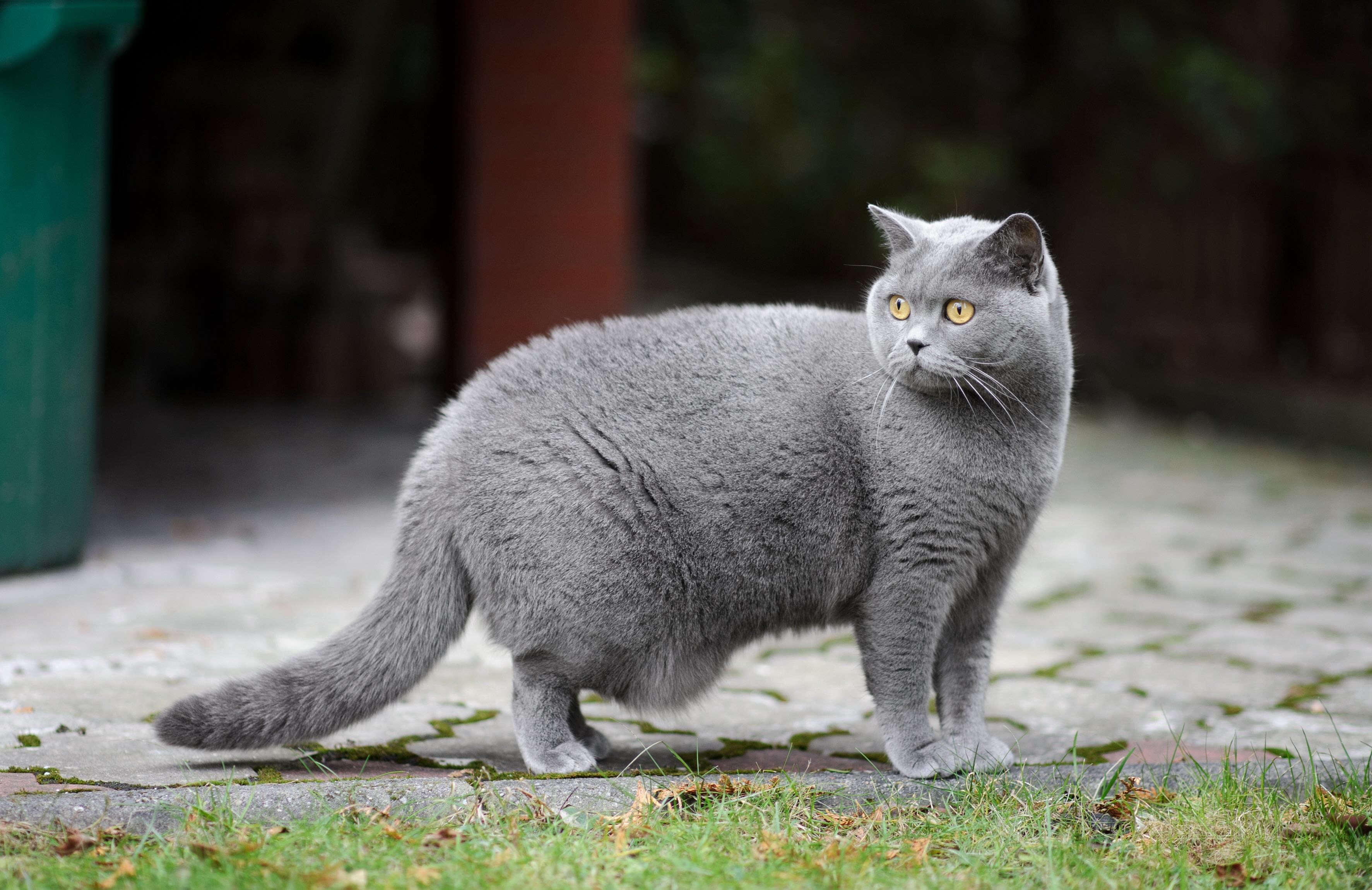 A blue British Shorthair standing outdoors, displaying its round face and dense coat
A blue British Shorthair standing outdoors, displaying its round face and dense coat
Photo by Adobe Stock/gilotyna
Weight: 7–17 pounds
The British Shorthair has earned a reputation as a remarkably calm, adaptable, and easygoing feline companion. While they are known for their relaxed nature and preference for lounging, British Shorthairs require encouragement to maintain an active lifestyle.
To keep them engaged and moving, incorporate interactive toys like feather wands and playful sessions with catnip. Additionally, mindful portion control during meals and limiting treats are essential to prevent weight gain, which could put undue stress on their joints over time.
10. Turkish Van
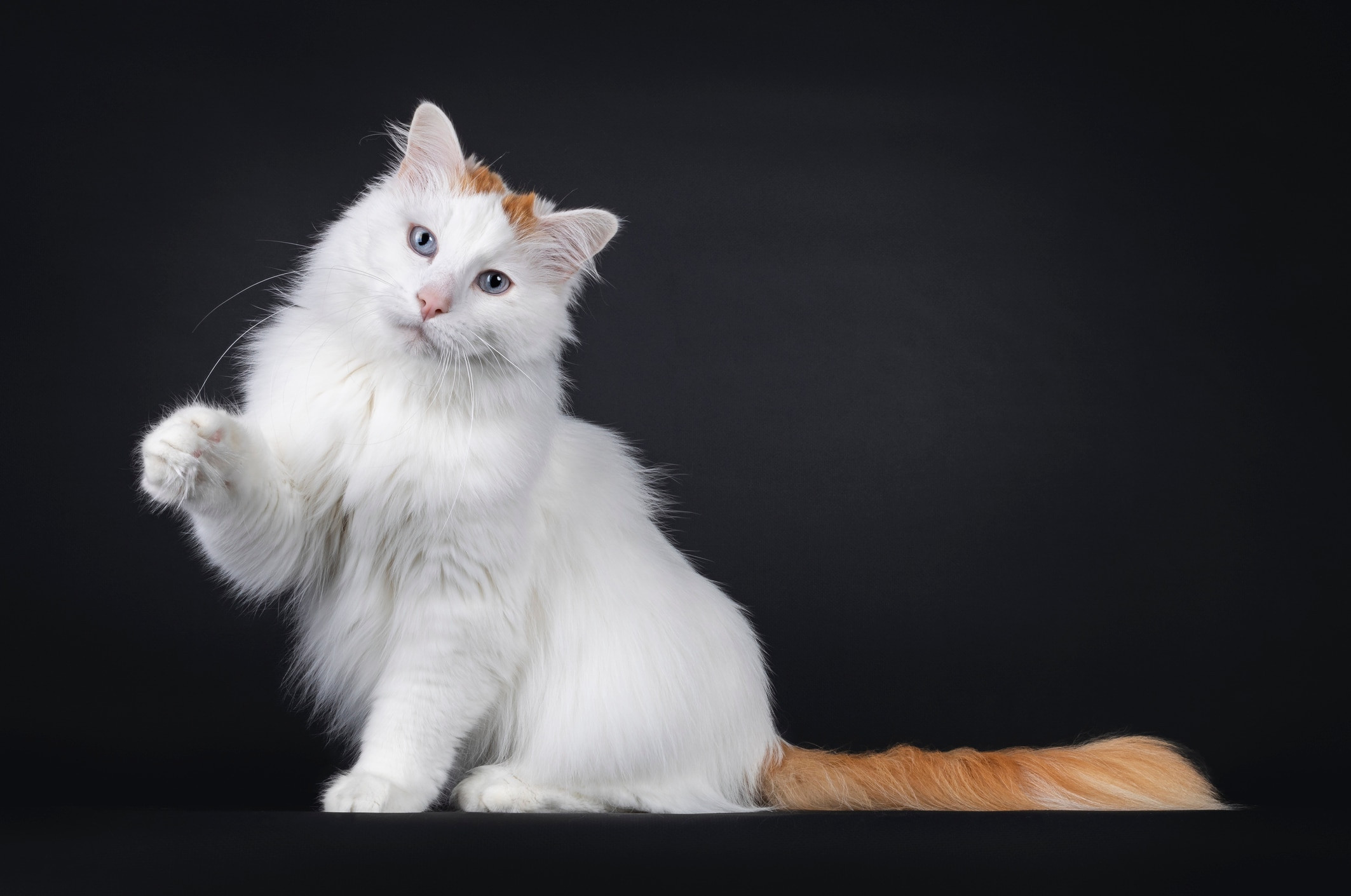 A Turkish Van cat sitting and pawing with a black background, highlighting its white coat and water-loving reputation
A Turkish Van cat sitting and pawing with a black background, highlighting its white coat and water-loving reputation
Photo by Nynke van Holten/iStock / Getty Images Plus via Getty Images
Weight: 10–20 pounds
The Turkish Van stands out as not only one of the biggest house cat breeds but also for their distinctive personality trait: a surprising affinity for water. Whether they are playfully splashing in pet water fountains or curiously investigating bathtubs, Turkish Vans are active and inquisitive cats that thrive on enrichment. Providing them with tall cat trees, sturdy shelves, and scratching posts helps channel their energy in positive ways. Regular exercise is also crucial to prevent weight gain and maintain healthy joints throughout their lives.
WRITTEN BY
Shannon Willoby
Freelance Writer
